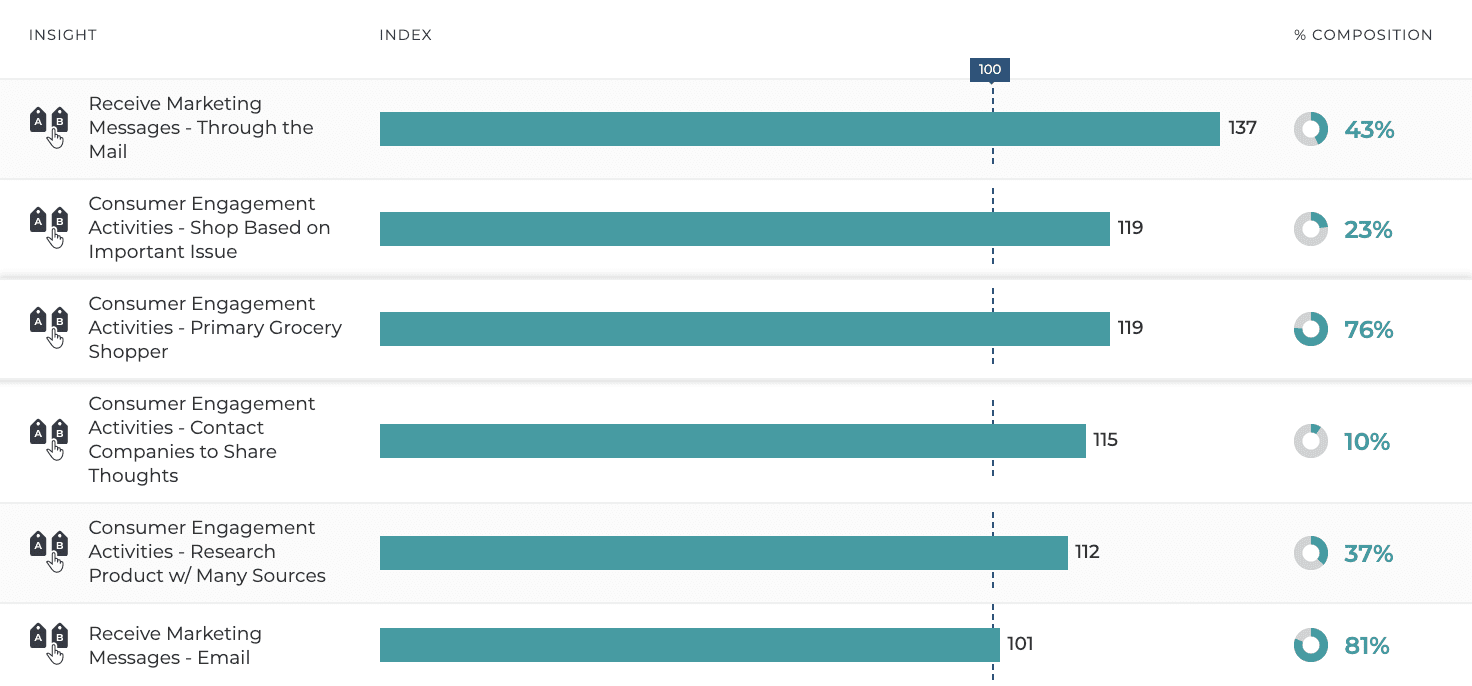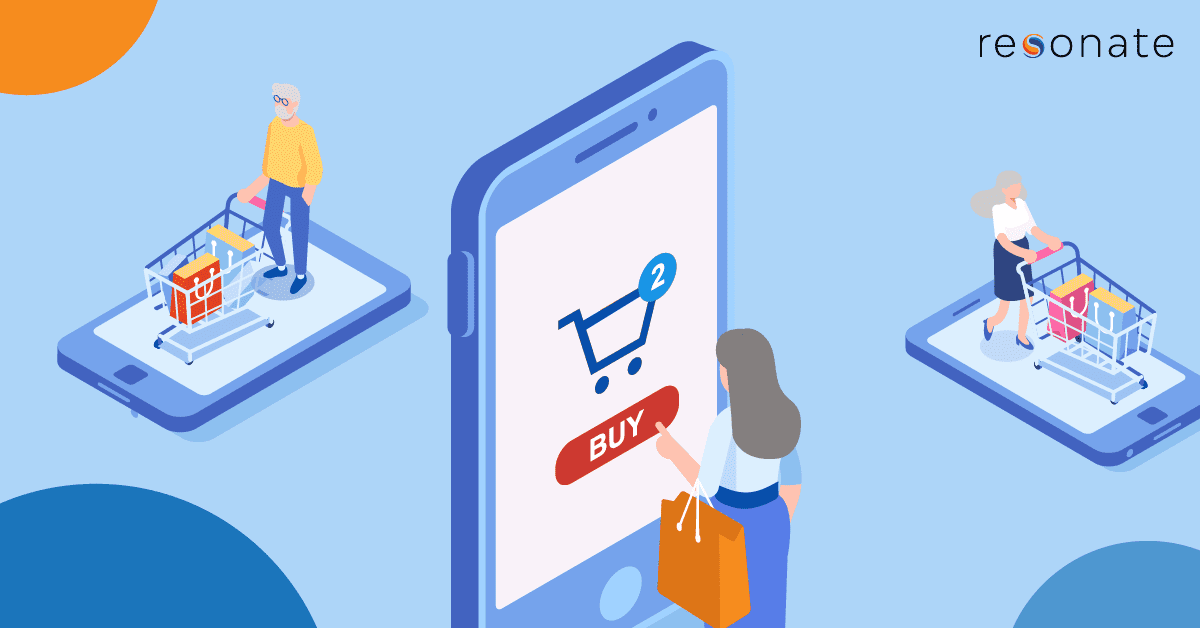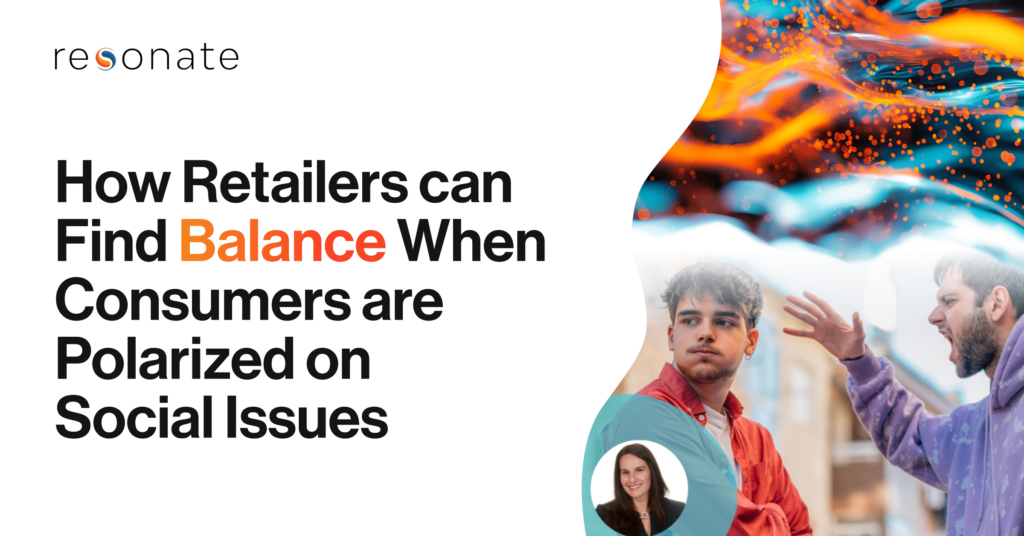Before we look at Baby Boomer online shoppers, let’s keep in mind one key fact: E-commerce is the new commerce.
Throughout 2020, and now 2021, we closely track consumer sentiment, watching as Americans move their purchases online across verticals and tracking what could entice shoppers back into brick and mortar stores. And, while nearly 70% of American consumers say they’d prefer to return to in-store grocery shopping once safe, that’s not the case for everyone.
The Rise of the Baby Boomer Online Shopper
Baby boomers. They’re almost 14% less likely to say they’ll return to grocery shopping in-store post-pandemic. But it wasn’t always this way.
The Washington Post recently published Baby Boomers, to retailers’ surprise, are the ones dominating online shopping, exploring the generation that is seeing the most significant increases in e-commerce use. Adults over 65, previously hesitant to dive into online shopping, have found themselves eager to hit “add to cart” as they avoid going into public, knowing they are at high risk for severe cases of the coronavirus.
This adoption of online shopping has led to serious dollars. As the Washington Post article states, “Consumers 65 and older, on average, spent a total of $1,615 online from January through October, a 49 percent increase from a year earlier.”
Baby Boomers are an important demographic given their spending power. For e-commerce brands, this is an opportunity with an untapped market. In fact, our data shows that in the next 90 days, Baby Boomers are…
- 190% more likely than the average American consumer to start a food delivery service subscription
- 9% more likely to increase online grocery orders
- 73% more likely to start a new virtual gym subscription (such as Peloton or Mirror)
- 14% more likely to increase their likelihood to purchase products online
- 40% more likely to decrease their likelihood to visit a grocery store or pharmacy in-person
They’re jumping into the deep end of e-commerce and there’s no looking back now…
So, Who are These Baby Boomer Online Shoppers?
Here’s a quick peek: they skew female, with 57% falling into the 55-64, younger end of the age group and 43% celebrating a birthday over 65. They’re 190% more likely than the average American adult to be retired and 86% do not have children under 18 at home. 28% have an annual household income over $100K and 80% have some college or more education. In their free time, this group enjoys eating healthfully, leading a life grounded in religion, and gardening. Of those who are not retired, they’re 621% more likely than the average American to be working remotely.
Baby boomers value duty, also known as obeying laws and fulfilling obligations. Could this factor into why they’re determined to #stayhome and shop online?
Additionally, they value safety in community and nation, as well as being reliable and trustworthy.
These Baby Boomers are in a slightly more financially comfortable position than many other Americans. They’re 7% more likely to say they are currently living comfortably, defined as more than able to pay for necessities, with a cushion of money in reserve. Additionally, they’re 5% more likely to say they are not worried about their current personal financial situation. However, they’re also 17% more likely to be concerned about the financial consequences of the pandemic to a large extent.
The Where and What of Baby Boomer E-Commerce
76% — 19% more likely than the average consumer — say that they are the primary grocery shopper in their household. They’re 110% more likely to have a primary credit card that’s a retail/grocery rewards card and 39% more likely to say their primary credit card is a retail/grocery chain discount card.
So, where are they grocery shopping? And what are they buying online? Compared to the average consumer, they are…
- 41% more likely to have placed a Wegman’s online order in the last 3 months
- 32% more likely to have placed a Harris Teeter online order in the last 3 months
- 5% more likely to have placed a Whole Foods online order in the last 6 months
- 9% more likely to order from Amazon Fresh
- 8% more likely to buy household goods online
- 6% more likely to buy pet supplies online
- 34% more likely to buy coffee online
- 122% more likely to buy wine/beer/alcohol online
When it comes to other retail…
They’re 57% more likely to shop at True Value Hardware and 28% more likely to shop at CVS. How can these traditionally brick-and-mortar retailers beef up their online and curbside pickup options? Additionally, when it comes to retail clothing, they’re 200% more likely to shop at Talbots, 146% more likely to shop at Lands’ End, and 102% more likely to shop at J.Crew.
For retailers who already have an e-commerce presence, they should consider how a Baby Boomer demographic can find representation within their email marketing and website.
How can You Connect with Baby Boomers?
First, let’s think about what drives Baby Boomers to shop and what motivates them to buy. As you can see in the screenshots from the Resonate Ignite Platform™ below, while Baby Boomers have moved their purchasing online, they’re still 37% more likely to receive a marketing message through the mail. However, they’re no less likely than the average consumer to receive marketing messages through email — a full 81% receive email marketing messages. They’re also invested in where they shop: they’re 19% more likely to shop based on an important issue and 15% more likely to contact a company to share their thoughts.
Even if you’re an e-commerce company, you may not want to give up on direct mail quite yet.

Source: Resonate Ignite Platform™
Baby Boomer online shoppers are more likely to shop, both for groceries and other goods, with mass merchants and warehouse clubs, as well as to make impulse purchases — how can you recreate these in-store experiences online? These shoppers are also approximately 20% more likely to use coupons and pre-written lists, both actions typically associated with in-person shopping. Can you, as an e-commerce retailer, create the functionality within your website or app that allows these shoppers to store shopping lists and apply virtual coupons?
This group is also 20% more likely to buy online and pick-up in-store so don’t neglect making your curbside pick-up experience seamless and easy, particularly for those who aren’t as familiar with online shopping processes.

Source: Resonate Ignite Platform™
If you’re running advertising, you’ll find these Baby Boomer online shoppers watching CBS, Hallmark, The Weather Channel, HGTV, and, not surprisingly, TV Land (gotta love those reruns). They’re giving the younger generations a run for their money with 59% spending over 20 hours a week online. You won’t find them on TikTok or Twitter, but Facebook could be a good place to start running ads.
Additionally, they’re more likely to read their daily local newspaper than larger national newspapers, and AARP The Magazine, Reader’s Digest, AAA Living, Woman’s Day, and Better Homes & Gardens are their magazines of choice.

Source: Resonate Ignite Platform™
Will They Return to In-Person Shopping Once There’s a Vaccine?
Despite the fact they’re shopping online more, this is an optimistic group (23% more likely than the average American to be driven by an optimistic outlook!). This could be why they’re 65% more likely to say they believe life will be back to normal in 2-3 months — and could that be because they’re more likely to be next in line to get the vaccine?
Half the group, at a rate of 22% more likely than the average consumer, says that vaccine availability would be required for them to return to stores.
And, despite their positive attitude about life returning to normal, let’s keep in mind that it could be months or longer before the entire US population is vaccinated — which means continuing to focus on your e-commerce outreach to this growing group is not just a short term strategy.

Source: Resonate Ignite Platform™
Want to learn more about how you can connect with Baby Boomers and other generational groups during the coronavirus pandemic and beyond? Request a demo today and we’ll walk you through the Ignite Platform™, where you’ll gain access to all of this data and more, all in one place, all on day one.



